Town Demographics & Facts
Brief History
- The Town of Ithaca is located on the traditional and ancestral homelands of the Gayogohó:nǫˀ (Cayuga Nation). The Gayogohó:nǫˀ are one of the Six Nations of Hodinǫhsǫ́:nih (Haudenosaunee Confederacy, sometimes referred to as the Iroquois Confederacy). This region is also home to the Saponi Nation and the Deyodi:ho:nǫˀ (Tutelo Nation), which are indigenous nations that were adopted by the Gayogohó:nǫˀ after being displaced from their homelands further south. Ithaca has a rich indigenous history that long precedes the establishment of the United States. We honor the ongoing connection of Gayogohó:nǫˀ people, past and present, to these lands and waters.
- After the Sullivan-Clinton campaign and the Revolutionary War, the Military Tract of Central New York divided the region into tracts to compensate veterans of the war and was approved in 1789. The Town of Ithaca was historically located in the township of Ulysses, or Tract 22.
- The Town of Ithaca was populated by white settlers in 1794 and founded in 1821 when it split from the Town of Ulysses. The name Ithaca comes from the island home of the protagonist, Ulysses, in Homer’s Odyssey.
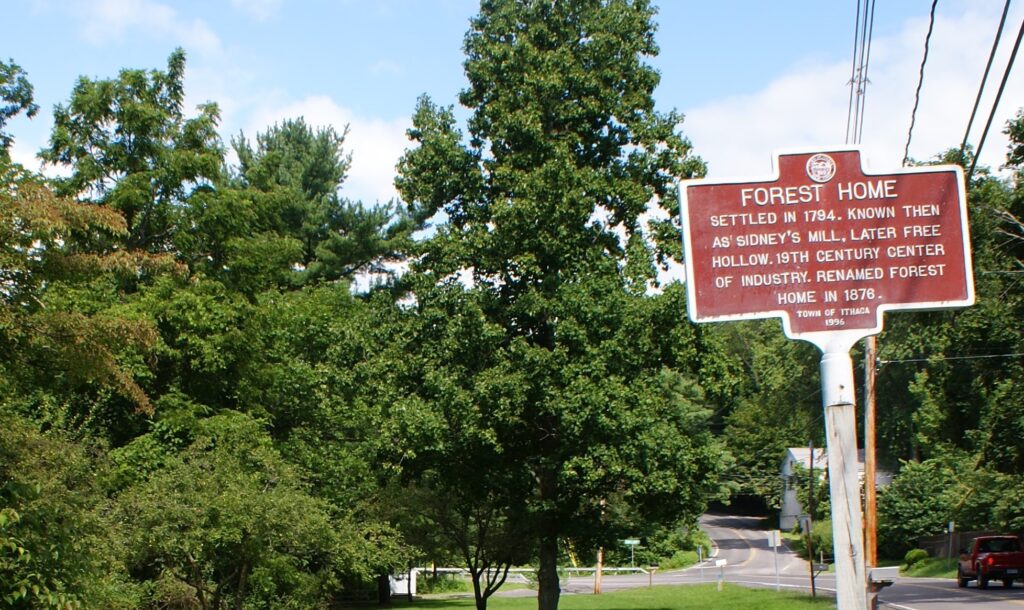
Location
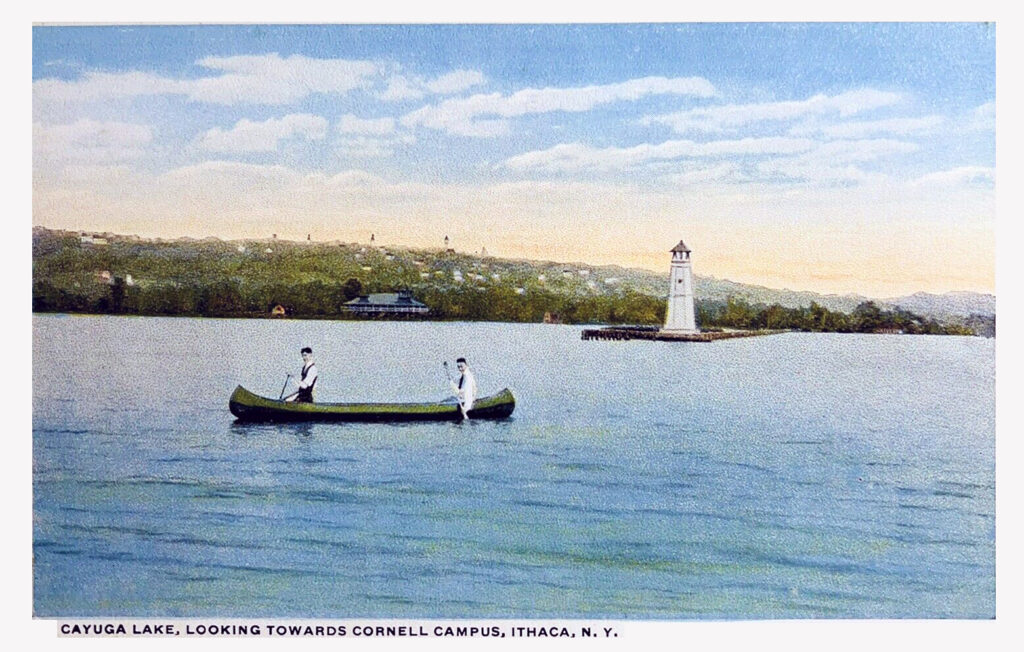
- The Town of Ithaca is situated in the Southern Tier of Upstate New York in the Finger Lakes region. The Town is located at the Southern tip of Cayuga Lake.
- The Town Hall building is an award-winning renovation of the historic U.S. Post Office on N. Tioga St. and was purchased for one dollar in 1997. It received the Historic Ithaca and Tompkins County Award of Merit for the adaptive reuse of the old Post Office in 2001.
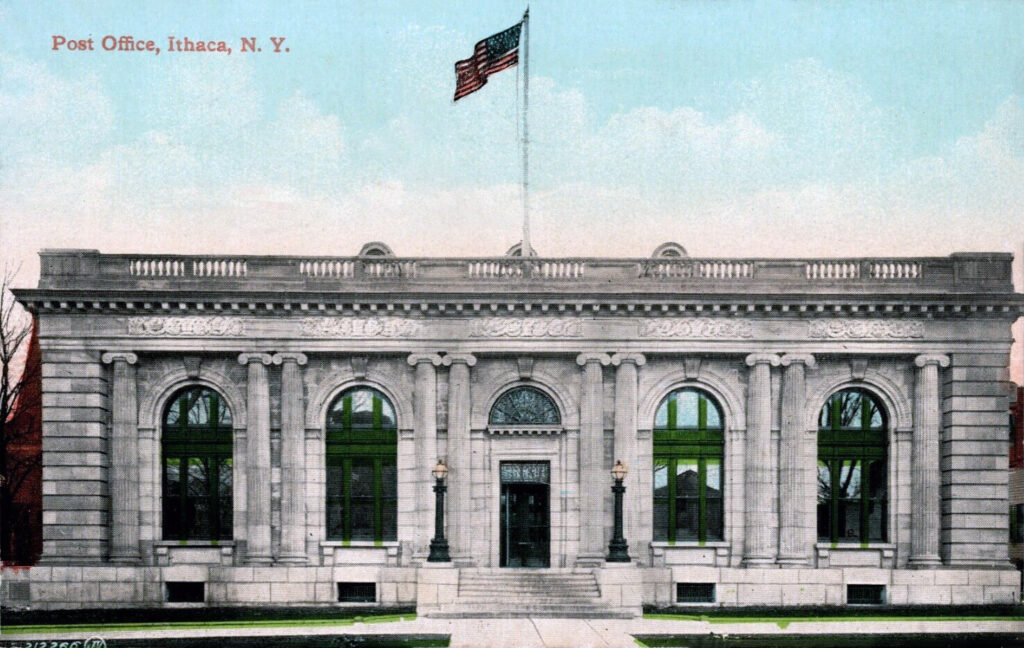
Educational, Park and Cultural Services
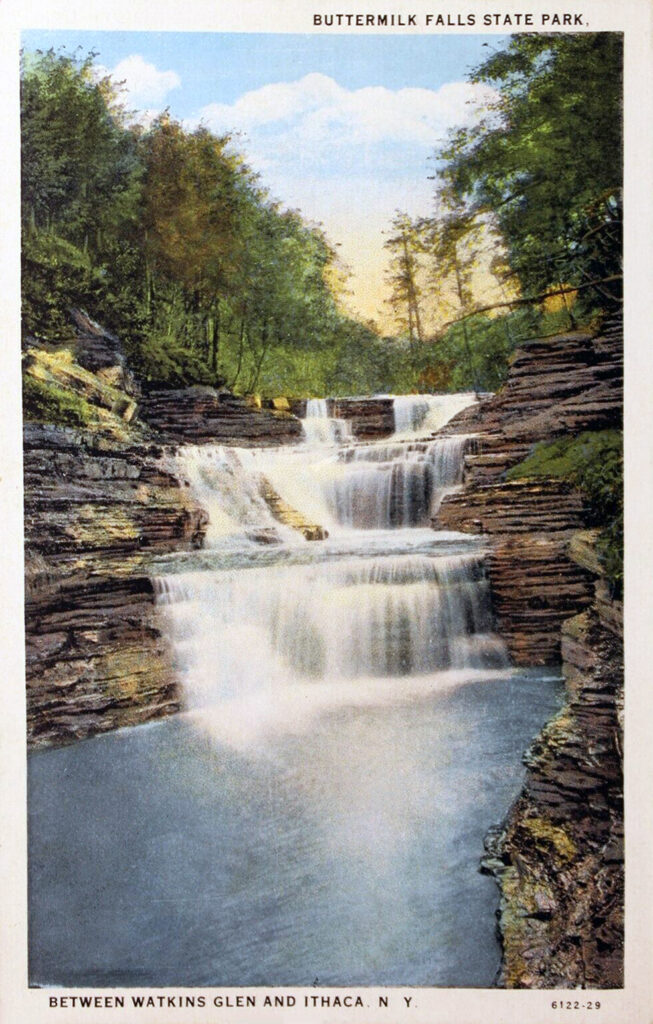
- The Town of Ithaca is home to part of the Cornell University campus and home to Ithaca College.
- The Town of Ithaca manages and owns many parks, preserves, and trails.
- Within the Town are two state parks, Robert H. Treman and Buttermilk Falls State Park. Within the boundaries is also the State-maintained Black Diamond Trail. Also nearby are the Allan H. Treman State Marine Park and the Cornell Botanic Garden and trails.
- The Museum of the Earth is a natural history museum opened by the Paleontological Research Institution that is located in the Town.
Quick Facts
- Total Population: 22,283 (2020); 19,930 (2010)
- Total Land Area: 30.26 square miles (2020)
- Population Density: 736 people / square mile
- Median Household Income: $72,790
- Bachelor’s degree or Higher: 69.4%
- Employment Rate: 52.6%
- Total Housing Units: 8,285 units
- Total Households: 7,062
- Veteran Population: 2.8%
- Poverty Population: 14%
- Disability Population: 9.2%
Age Distribution
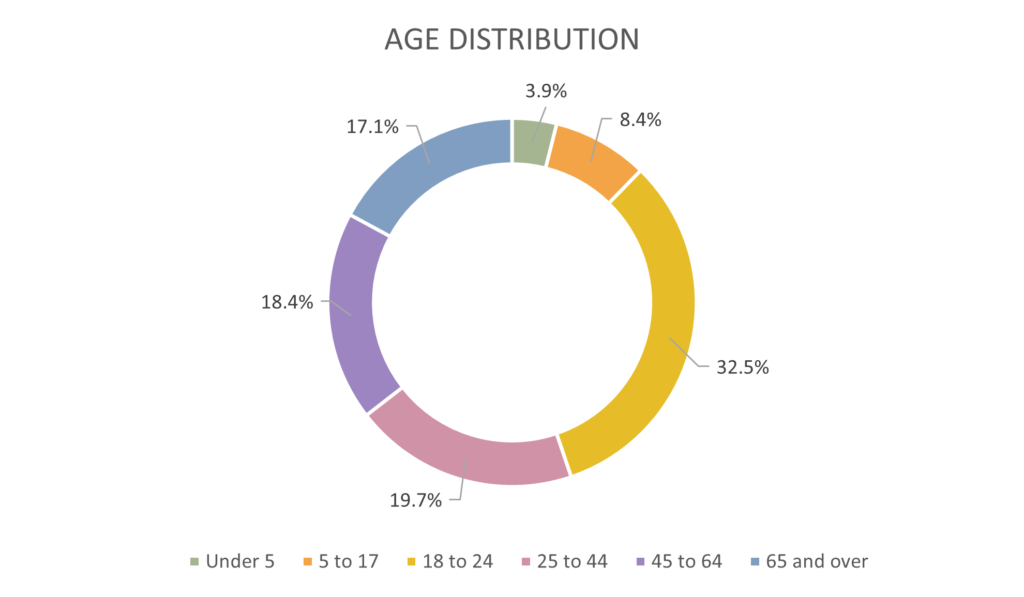
Race and Ethnicity
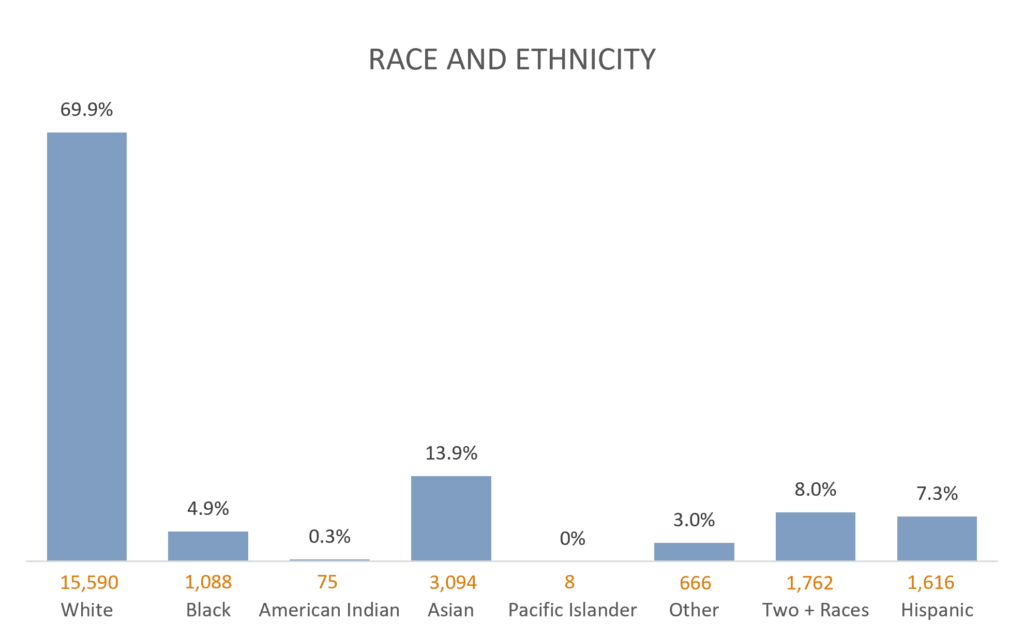
Education
Educational Attainment
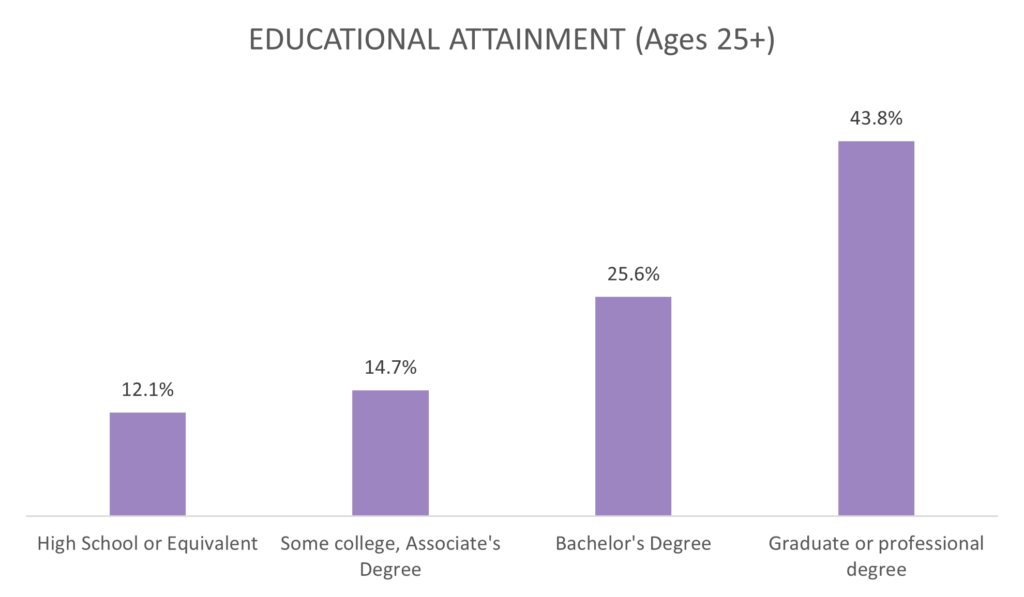
Enrollment
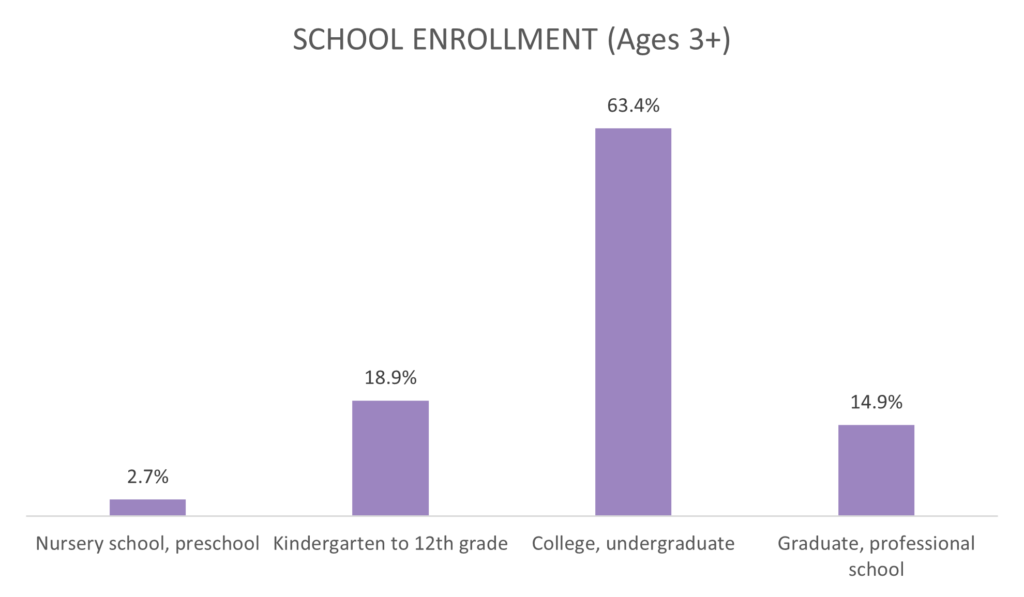
College Students
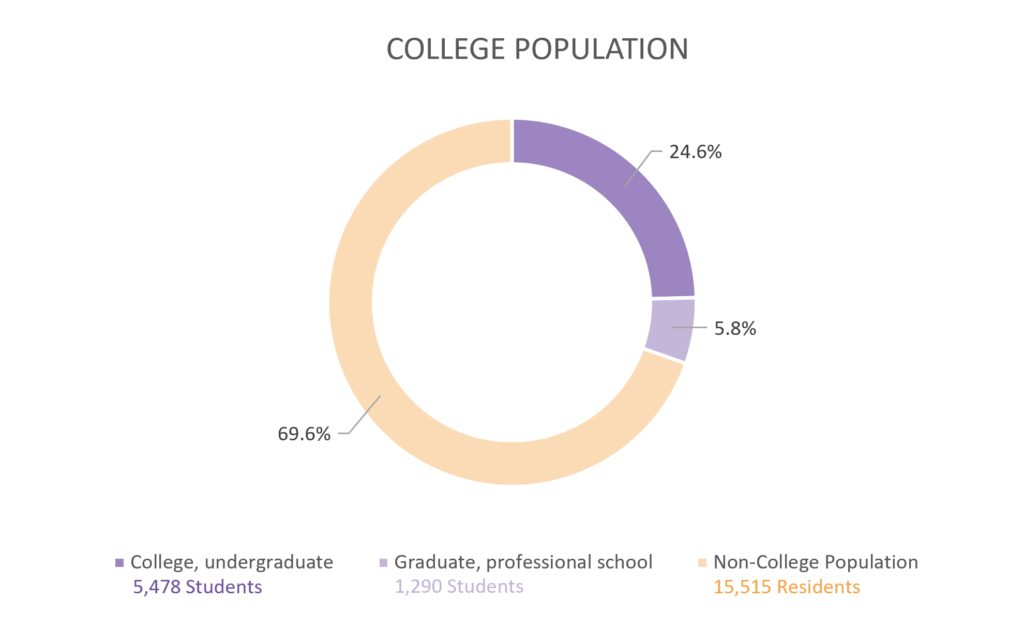
Cornell University
University Enrollment
- 25,582 Total Students: 15,503 undergraduate; 7,101 graduate; 2,978 professionals (Fall 2021)
- Faculty/Staff: 1,695 faculty; 1,129 academic professionals; 7,420 staff (Fall 2020)
Ithaca College
College Enrollment
- 5,239 Total Students: 4,818 undergraduate; 421 graduate (Fall 2021 AIR)
- Faculty/Staff: 537 faculty; 896 staff (Fall 2021 AIR)
Employment
Employment Status
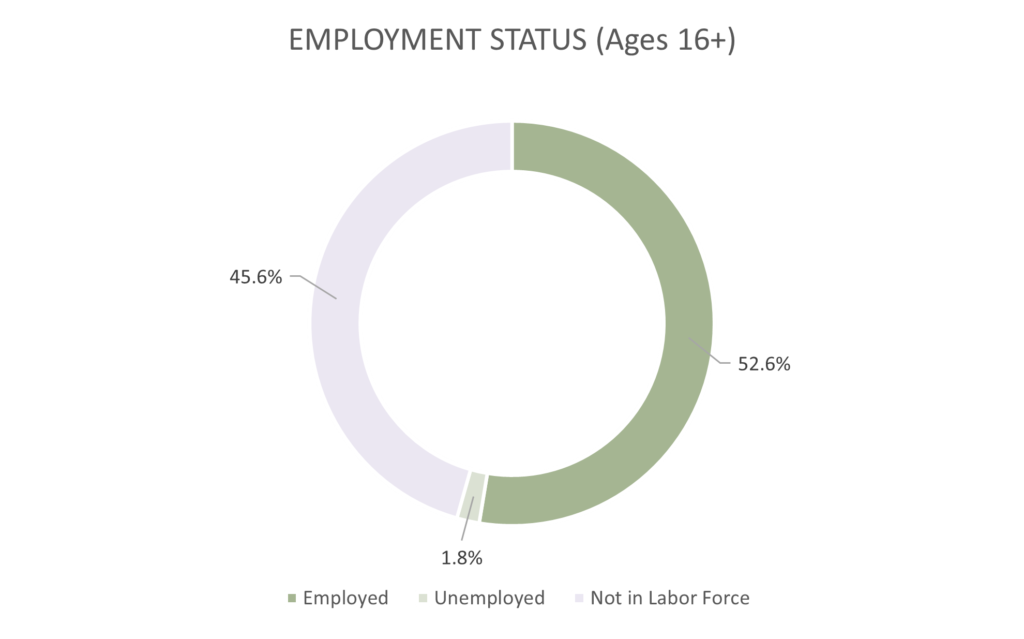
Not in labor force includes all people 16 years old and over who are not classified as members of the labor force. This category consists mainly of students, housewives, retired workers, seasonal workers interviewed in an off season who were not looking for work, institutionalized people, and people doing only incidental unpaid family work (less than 15 hours during the reference week).
Class of Worker
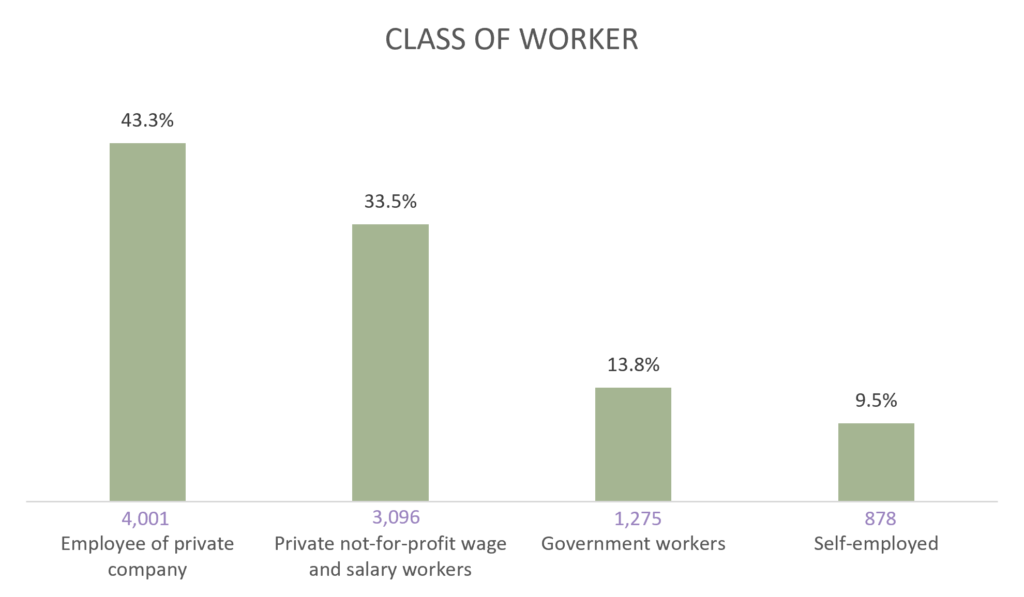
Industry
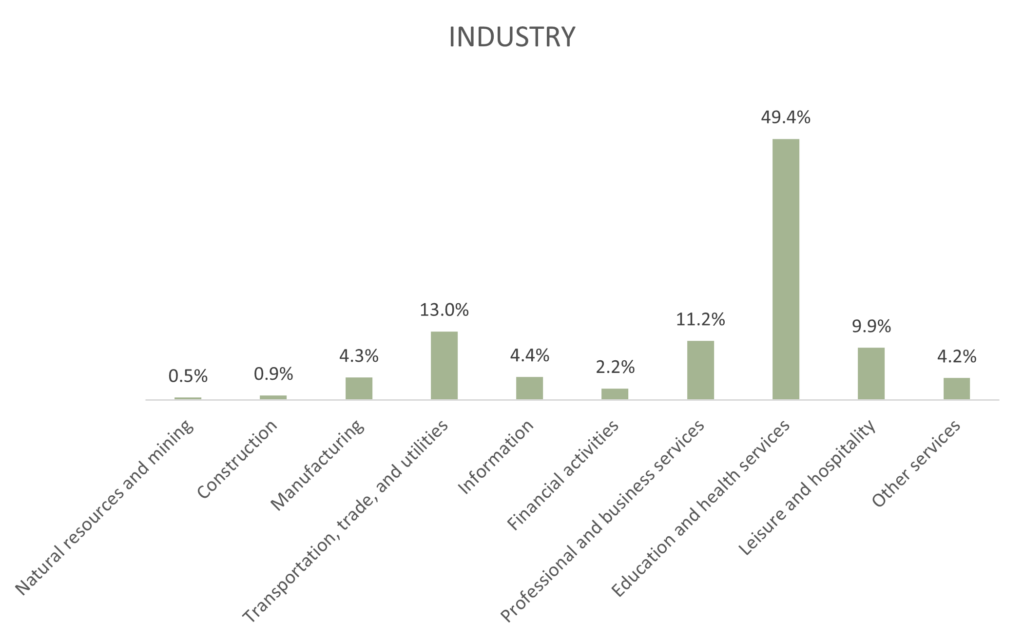
Occupation
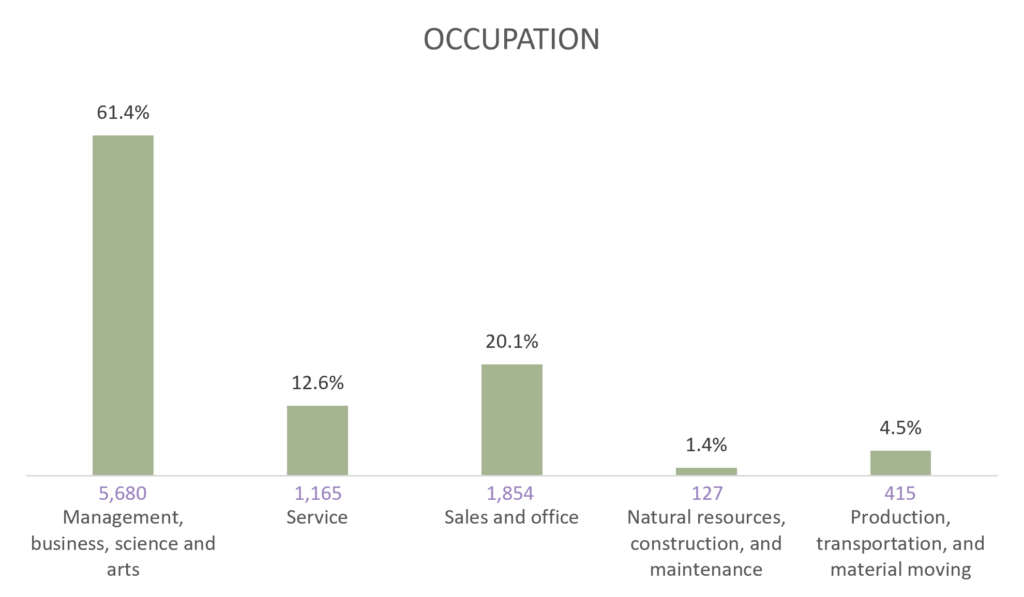
Housing
- Total Housing Units: 8,285 units
- Median Household Income: $72,790
- Total Households: 7,062 households
- Average Household Size: 2.11
- Total Families: 3,711 families
- Average Family Size: 2.6
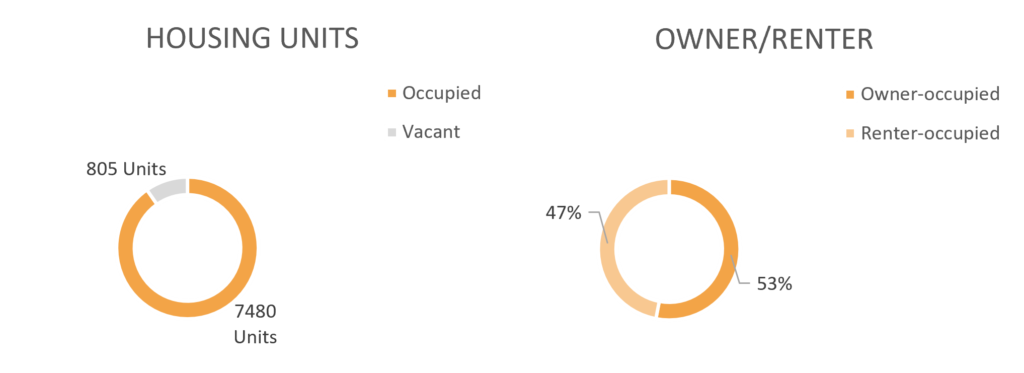
Neighborhood Distribution
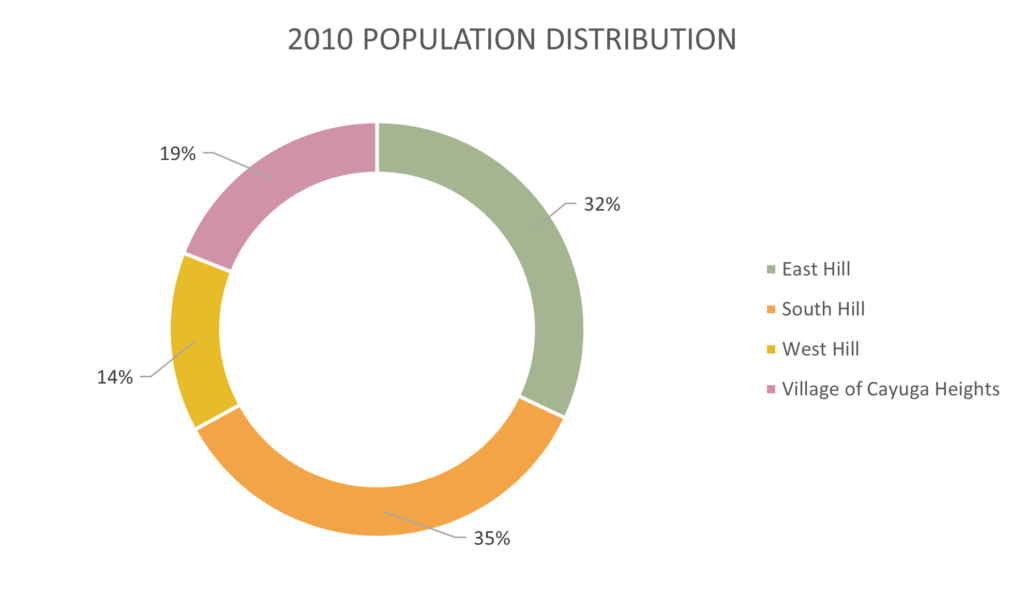
Source: 2010 Census
All data is from the 2020 Census or the 2020 5-Year ACS and includes the Village of Cayuga Heights unless otherwise specified.